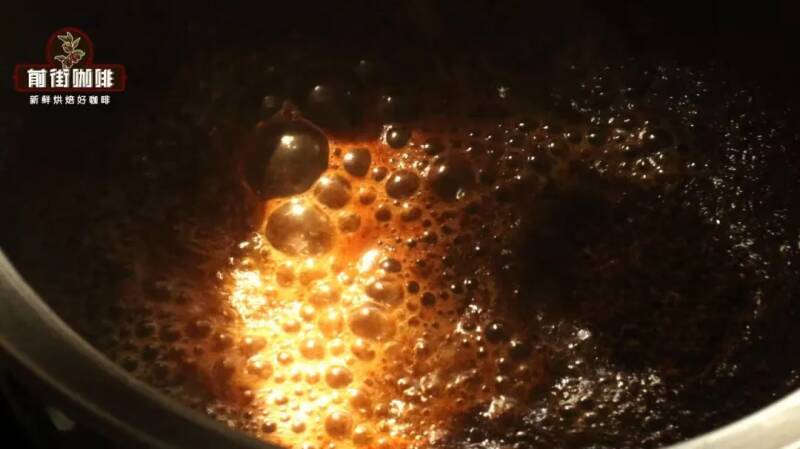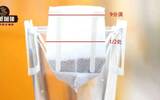Why don't Italians drink hand-made coffee? Can I order American coffee in Italy? Who invented the espresso machine? What is Espresso?
Qian Jie believes that many friends have touched on a hot topic that has recently become popular on the Internet: "Why don't Italians drink hand-brewed coffee? "Obviously, the answer to this question is the same as the article Qian Jie shared last year: " Why is it easy to get beaten when ordering ice in Italy?", which is both negative. Hand-brewed coffee also has an audience in Italy, but compared with other countries, hand-brewed coffee audiences will not account for so high a proportion of coffee drinkers in Italy. Not just hand-brewed coffee, single or boutique coffees other than hand-brewed coffee have not become popular locally. This phenomenon is a relatively normal situation in other countries, but because it occurs in Italy, it is a bit incomprehensible to everyone.
The reason is that Italy has a long history of coffee culture, and coffee has long been integrated into people's daily lives. For a country where coffee is ubiquitous, the current popular hand-brewed coffee has almost no place in the local area. So the implication of this question should be: Why is hand-brewed coffee "unpopular" in Italy? In fact, this problem is similar to how easy it is to be "beaten" when ordering American dishes in Italy! The reason why hand-brewed coffee is not popular in Italy is also closely related to the local deep-rooted coffee cultural tradition and unique pace of life, as Qianjie shared in the previous article.
Italian coffee culture
Since 1580, coffee beans have entered Italy through the port of Venice, one of the first ports in European countries to import coffee beans. So thanks to this, Italians will come into contact with coffee much earlier than in other countries. By the mid-17th century, with the opening of Europe's first coffee shop in Rome, coffee began to become popular in Italy. Like most countries, the early way Italians made coffee was also Turkish. The specific method is to pour the ground coffee powder and water into an old-fashioned Turkish copper pot to boil it, and then filter the coffee grounds through filter cloth.

Putting aside the taste, there is a significant disadvantage of making coffee in this way, which is that it is slow. Every time you drink a cup of coffee, you have to wait for a long time, which is very difficult for many people to accept. Therefore, with the advent of the industrial revolution, the way coffee is extracted has also undergone earth-shaking changes. In 1884, Angelo Moriondo invented a machine that quickly extracts coffee using steam and successfully registered a patent in Turin, Italy. Although the coffee making time was greatly shortened, because the extraction power came from steam and its stability was poor, this machine was later improved by countless people.
In 1905, the patent was improved by Milan manufacturer Luigi Bezzara to have steam pressurization and a commercial model was launched. Although the pressure is only 1.5 bar, this can shorten the coffee extraction time to 1 minute. For that era, this speed was simply too fast! So around 1920,"Espresso" was officially included in the Italian dictionary, and "espresso made using a pressurized machine or filter" was what it meant.
The story is not over yet! In 1938, Achilles Gaggia, an engineer in Milan, made further improvements to the machine, allowing the coffee machine to increase the pressure from 1.5 bar to 9bar. The pressure of 9bar not only allows coffee to be extracted more quickly, but also gives the coffee a thick and dense layer of Crema (grease), making the extraction of coffee more stable.
As the functions of the coffee machine gradually improved, not only has the way coffee is made undergone earth-shaking changes, but it has also established the coffee drinking habits of Italians. The reason why single coffee such as hand-brewed coffee is not very popular in Italy is related to this habit.
Why is hand-brewed coffee not very popular in Italy?
Qian Street believes that for Italian coffee consumers, their main requirements for coffee can be summarized into three: fast, strong and cheap. Yes, it means espresso. Espresso consumption in Italy is the second largest beverage after water. Because of this, Italians often call it caffè for short. When ordering, they will directly tell the barista: Take some coffee, and then the barista will default to serve a quick cup of espresso. Generally, these concentrates are made from deep-roasted coffee beans and are made from Robsta and Arabica, which gives the concentrate a strong bitterness and rich oil. Some people will add yellow sugar to balance the bitterness before tasting, then stir it a little and drink it in one gulp. It is very enjoyable.
The characteristics of hand-brewed coffee are completely opposite! Not only is the baking not as deep, but the concentration will not be as high as the concentration. Everything is to better show the flavor. But for Italians, because they have been taught since childhood that coffee should be strong enough and bitter enough, it is obvious that hand-brewed coffee, whether it is taste or concentration, for Italians who have not received high-quality "education", is the complete opposite of the delicious taste in their perception. And Front Street said that for most consumers in Italy, coffee is an everyday drink (Front Street also believes that coffee is an everyday drink). This is not only reflected in sales, but also because the concentrated price is very cheap!
The price of a cup of concentrate is usually around 1 euro, which translates to 7 yuan in RMB, which is very, very cheap. Because the beans used are of better quality, hand-brewed coffee will cost several times that of concentrated coffee. This is something that most Italian consumers cannot understand, because coffee is a daily drink like water, and they do not understand why they should pay more for a cup of coffee. So not only hand-brewed coffee, but also other types of high-quality coffee will have a relatively small market in Italy.
Finally, there is the production time! Efficient and fast-paced are the main atmosphere of Italian cafes. Use your spare time to go to a cafe to order a cup of espresso, enjoy it quickly, chat with the people around you and leave quickly. This is one of the deep-rooted habits of Italians. The rhythm of making coffee by hand is completely opposite. Not only does it take a long time to make coffee, but it also takes more time to savor it.
Therefore, combining the above three points, Qianjie said that the reason why hand-brewed coffee has not become popular in Italy is closely related to the local deep-rooted coffee cultural tradition and unique pace of life. However, with the penetration of fine coffee culture, more and more local merchants in Italy have made fine coffee, and the number of consumers accepting fine coffee is gradually increasing. It's just that under deep-rooted traditions, this process will take a little longer ~ but it is still constantly changing ~
- END -
Important Notice :
前街咖啡 FrontStreet Coffee has moved to new addredd:
FrontStreet Coffee Address: 315,Donghua East Road,GuangZhou
Tel:020 38364473
- Prev

Why does the ratio of espresso powder to liquid have to be 1:2? Does 18 grams of powder have to be extracted to produce 36ml of coffee?
Qianjie believes that when you have been exposed to espresso for some time, you will not be unfamiliar with the powder-to-liquid ratio of "1:2", because it is often known as the "golden ratio" of Italian concentration. When extracting espresso, it is the most commonly used ratio. The powder-to-liquid ratio refers to the amount of coffee powder used
- Next

How to make hanging ear coffee better? Can hanging coffee make a latte? What is the difference between cold extract coffee and milk extract coffee? How much water does it take to make ear coffee?
Hanging ear coffee is popular among everyone because it is very easy to carry and can easily make a delicious cup of black coffee without complicated operations. Although it does not have the same aroma as freshly ground coffee due to its "prefabricated"(pre-grinding), it is quite delicious as long as it is brewed properly. in
Related
- What ratio of water temperature and ground does the smart cup method use to press coffee? The difference between brewed coffee and filtered coffee?
- What is the standard process for the purpose of coffee cup testing? What is the difference between hand-brewed coffee and cup testing?
- How to use hand-brewed coffee paragon small golden balls? How does cold coffee lock in the aroma of coffee?
- Is American coffee black? What is the difference between American coffee and drip coffee?
- Unexpected! Well-known tea beverage brand Lele Tea will withdraw from the Zhengzhou market!
- Starbucks enters the fashion and beauty industry?! Netizen: Give me an ice American eye cream
- Why can American refills for free? The difference between Americano and American drip pot coffee
- Being chased out of the rain in front of Starbucks?! Store: Sheltering from rain under umbrellas poses a safety hazard
- The white moonlight has changed?! Lucky launches "Big Winter Pear American"
- Hand-brewed coffee three-stage method, high-sweet and universal brewing method to share! What does the high sweet water level of hand-brewed coffee mean?

